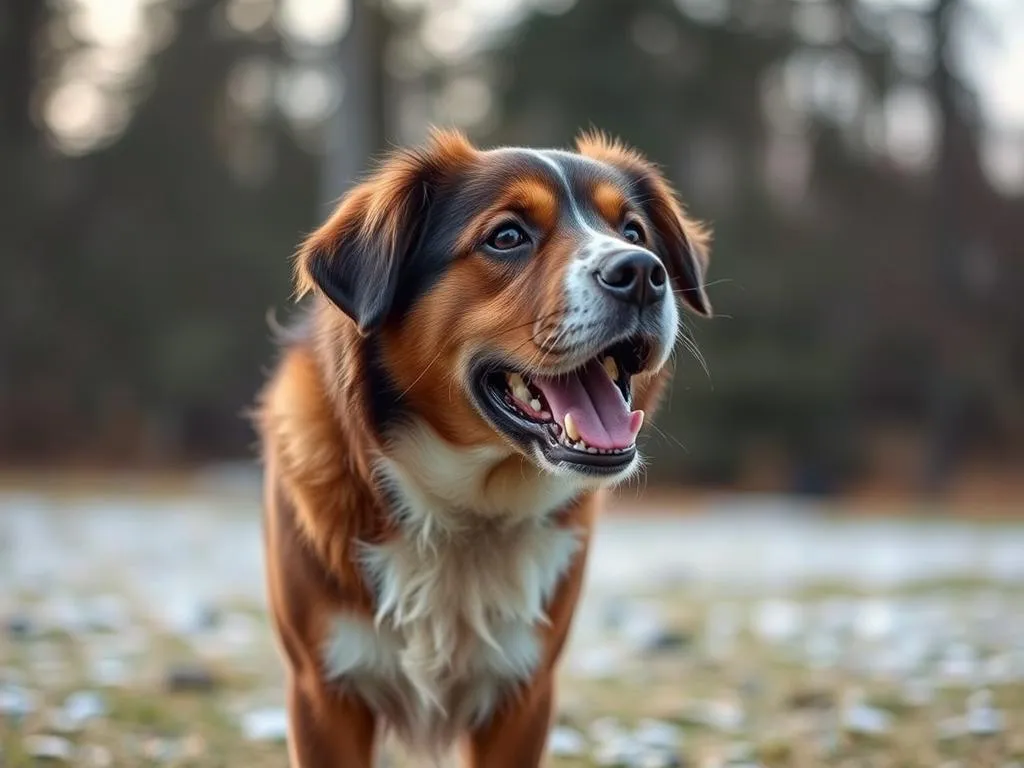
Introduction
Skittishness in dogs can be a challenging behavior for both the dog and the owner. Skittishness is characterized by a dog’s fearful or anxious response to various stimuli, often causing them to retreat, hide, or react nervously. This behavior can stem from a multitude of factors including genetics, past trauma, or a lack of proper socialization.
Training a skittish dog is essential not only for the dog’s well-being but also for enhancing the relationship between the dog and its owner. A well-trained dog tends to be more confident, relaxed, and enjoyable to interact with, transforming everyday experiences into positive ones. In this article, we’ll explore various techniques and strategies to help you understand and effectively train your skittish dog, leading to a happier and more stable life for both of you.
Understanding Skittishness in Dogs
Signs of a Skittish Dog
Recognizing the signs of a skittish dog is the first step in addressing the behavior. Common physical indicators include:
- Tail Position: A skittish dog often holds its tail low or tucked between its legs.
- Ears: Ears may be pinned back against the head or perked up in alertness.
- Posture: A tense body or crouched posture can indicate fear.
Behavioral signs might include:
- Hiding: Seeking refuge under furniture or in small spaces.
- Excessive Barking: Reacting vocally to perceived threats, such as loud noises or unfamiliar people.
Common Triggers
Understanding what triggers your dog’s skittishness is crucial for effective training. Some common triggers include:
- Loud Noises: Events such as thunderstorms or fireworks can evoke intense fear in skittish dogs.
- New Environments or People: Dogs may become anxious when introduced to unfamiliar settings or individuals.
- Sudden Movements or Changes in Routine: Abrupt changes can startle a skittish dog, leading to anxiety.
The Psychological Impact of Skittishness
The psychological effects of skittishness can be profound. Constant stress and anxiety can lead to detrimental behaviors, including aggression and other fear-based reactions if left unaddressed. It’s essential to approach training with empathy and an understanding of these underlying issues.
Preparing for Training
Assessing Your Dog’s Individual Needs
Before starting any training, observe your dog’s specific triggers and behaviors. Keep a journal of instances when your dog exhibits skittish behavior to identify patterns. Consulting with a veterinarian or a dog behaviorist can also provide valuable insights tailored to your pet’s needs.
Setting Realistic Goals
When training a skittish dog, it is vital to set both short-term and long-term goals. Short-term goals might include getting your dog comfortable with certain sounds, while long-term goals could involve building confidence in new environments. Remember, patience and consistency are key.
Creating a Safe and Comfortable Environment
Establish a designated training space in your home that is quiet and free from distractions. This safe zone should be a comfortable area where your dog can feel secure during training sessions. Minimizing stressors in this environment will help facilitate a more effective training process.
Training Techniques for Skittish Dogs
Positive Reinforcement Training
One of the most effective techniques for training skittish dogs is positive reinforcement. This method involves rewarding desired behaviors with treats, praise, or playtime. For example, when your dog remains calm in a stressful situation, immediately reward them to reinforce that behavior.
Desensitization and Counter-Conditioning
Desensitization involves gradually exposing your dog to the stimuli that make them anxious, starting at a low intensity. For instance, if your dog is afraid of thunder, play a recording of thunder at a low volume while providing treats and praise. As your dog becomes more comfortable, slowly increase the volume.
Counter-conditioning is a complementary technique that changes your dog’s emotional response to the trigger. For example, if your dog associates strangers with fear, offer treats when guests arrive, helping your dog to form a positive association.
Building Confidence Through Socialization
Gradual exposure to new experiences is crucial for building confidence in skittish dogs. Start with controlled socialization by introducing your dog to calm, well-behaved dogs and people. This can help your dog learn to navigate social situations more comfortably.
Clicker Training Basics
Clicker training is another effective method for training skittish dogs. This technique involves using a clicker to mark desired behaviors, followed by a reward. The click sound serves as a clear signal to your dog that they’ve done something right, helping them understand what behaviors you want to encourage.
Addressing Specific Scenarios
Training for Noise Sensitivity
To help your dog overcome noise sensitivity, use desensitization techniques. Start by exposing your dog to recorded sounds at a low volume, rewarding calm behavior. Gradually increase the volume as your dog becomes more comfortable.
Additionally, create a safe space during storms or fireworks. This can be a cozy area with blankets and treats where your dog can retreat when they feel scared.
Dealing with New Environments
Introducing your skittish dog to unfamiliar places should be done gradually. Start with quiet, low-traffic areas, allowing your dog to explore at their own pace. Use positive reinforcement to encourage exploration and reward them for calm behavior.
Handling Visitors and New People
To ease your dog’s anxiety around strangers, practice gradual introductions. Allow your dog to observe new visitors from a distance, rewarding them for calm behavior. Over time, decrease the distance between your dog and the visitor, continuing to reward positive interactions.
Maintaining Progress and Consistency
Establishing a Routine
Consistency is key when training a skittish dog. Establish a regular training schedule that incorporates short sessions throughout the day. This helps reinforce learning and builds trust between you and your dog.
Reinforcing Positive Behavior
Continue to reinforce positive behaviors with ongoing rewards and praise. This reinforces what your dog has learned and encourages them to repeat those behaviors. Monitor their progress, noting improvements and areas needing more focus.
Recognizing Setbacks
Setbacks are common when training a skittish dog. Recognize that progress may not always be linear and that patience is essential. If your dog regresses, reassess the training methods and adapt your approach as necessary.
When to Seek Professional Help
Signs That Professional Help is Needed
If your dog exhibits severe anxiety or aggression, or if you find that your training efforts are not yielding results, it may be time to consult a professional. A qualified dog trainer or behaviorist can provide specialized guidance tailored to your dog’s specific needs.
Choosing the Right Trainer or Behaviorist
Look for trainers who emphasize positive reinforcement methods. Check their qualifications and experience, and consider seeking recommendations from reputable sources. A trainer familiar with skittish dogs will be more equipped to help you.
What to Expect from Professional Training
Professional training can vary in style and approach. Some trainers may use group classes, while others may provide one-on-one sessions. Be prepared for a time commitment, and discuss potential costs upfront to ensure you find a suitable program for you and your dog.
Conclusion
Training a skittish dog requires understanding, patience, and dedication. By utilizing techniques such as positive reinforcement, desensitization, and socialization, you can help your dog build confidence and overcome fears. Remember to celebrate the small victories along the way, and maintain a consistent training routine.
With time and effort, you can transform your skittish dog into a more relaxed and confident companion. The journey may be challenging, but the bond you create through this process will be invaluable.
FAQs
How long does it take to train a skittish dog?
The time it takes to train a skittish dog varies widely based on the individual dog’s background and the consistency of training. Some dogs may show improvement in weeks, while others may take months.
Can all skittish dogs be trained?
Yes, with the right techniques and approaches, most skittish dogs can be trained to manage their fears and anxieties. However, the level of success may vary depending on the dog’s temperament and history.
What should I do if my dog reacts negatively during training?
If your dog reacts negatively during training, it’s essential to take a step back. Assess the situation, reduce the intensity of the training, and ensure that your dog feels safe. Adjust your methods to be more gradual and avoid overwhelming your dog.









